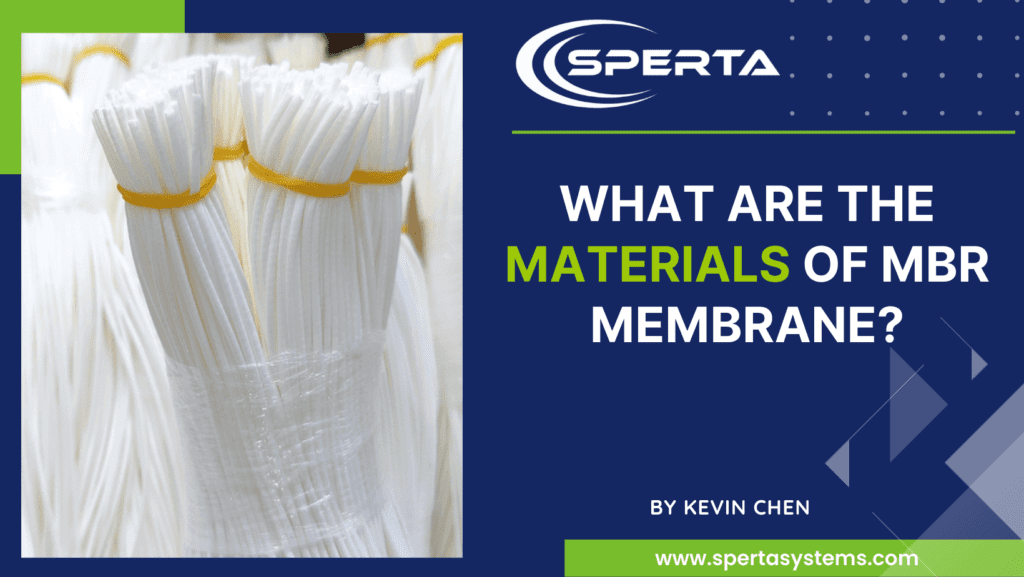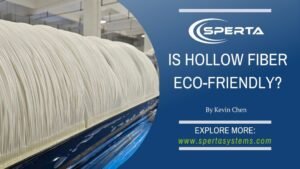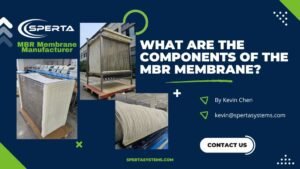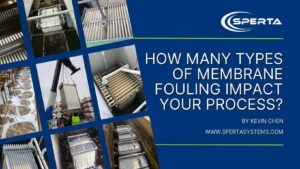Last Updated on October 24, 2023 by Kevin Chen
MBR membrane is also known as membrane bioreactor. It combines membrane separation and biological treatment technology and is often used in sewage and industrial wastewater treatment. The MBR membrane can be divided into the hollow fiber, flat sheet, and tubular membrane in terms of appearance structure. There are many kinds of membrane materials, mainly PVDF. This article will give you more information about the materials and classification of MBR membranes.
What are the Materials of MBR Membrane?
MBR membrane bioreactors have great differences according to different structures, applications, filtration methods, etc. The core components of different MBR membrane bioreactors are all filter membranes. Therefore, this type of material mainly refers to the membrane material. Except for the flat sheet MBR membrane, the most widely used material for MBR membrane bioreactors is PVDF, PVC, PTFE, and so on.
PVC (polyvinyl chloride) is a decorative plastic. Due to its inherent hydrophobicity and low strength, it has been damaged or broken and is gradually being eliminated in the sewage industry.
PVDF (polyvinylidene fluoride), because PVDF has the characteristics of both fluorine resin and general resin. It has good chemical resistance, high-temperature resistance, oxidation resistance, weather resistance, radiation resistance, and other excellent performance, becoming the primary material of MBR membrane in the field of wastewater treatment.
PTFE (polytetrafluoroethylene), a polymer made of tetrafluoroethylene monomer, has better chemical properties than PVDF. Still, the current production cost is higher than PVDF, with the reduction of production costs will be expected to replace the PVDF material MBR membrane.

What are the Classifications of MBR Membrane?
There are many classifications of MBR membranes. We can classify MBR membranes regarding filtration accuracy, appearance structure, and module placement.
Filtration precision: From the filtration precision, it can be divided into four types: microfiltration, ultrafiltration, nanofiltration and reverse osmosis. Nanofiltration and reverse osmosis have high filtration precision and stricter requirements for influent water quality. Such precision is not good material for MBR membrane bioreactors on the market, and most are ultrafiltration and microfiltration type MBR membranes.
Appearance structure: MBR membranes can be divided into hollow fiber, flat sheet, and tubular MBR membranes in terms of appearance structure. The characteristics and application of MBR membranes with different appearance structures will be different.
Module placement: According to the relative position of the membrane module and bioreactor tank, MBR can be divided into separate and integrated MBR membranes. Separate type is the membrane module and bioreactor set up separately, generally with high-pressure pump output raw water, the operation is relatively independent, easy to adjust and control. The integrated type refers to the membrane module placed directly in the bioreactor, and the effluent is pumped out to obtain the filtrate. The integrated MBR membrane also called submerged MBR membrane, has a one-piece structure, and the appearance of the integrated MBR floor has greatly reduced the energy consumption and floor space of the treatment system.
The above is the information about different materials of MBR membrane. If you still have related questions about the MBR membrane bioreactor, please feel free to contact SPERTA.








